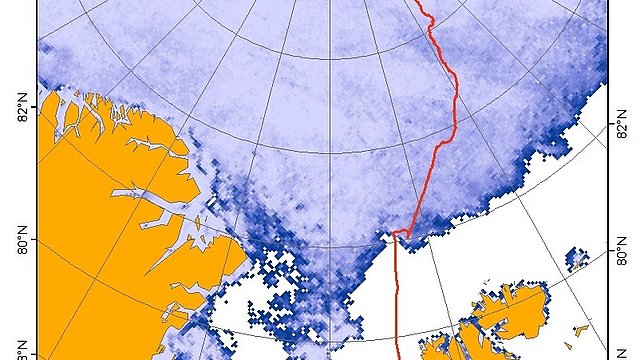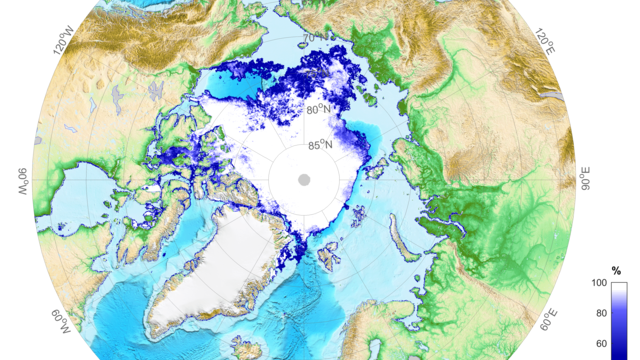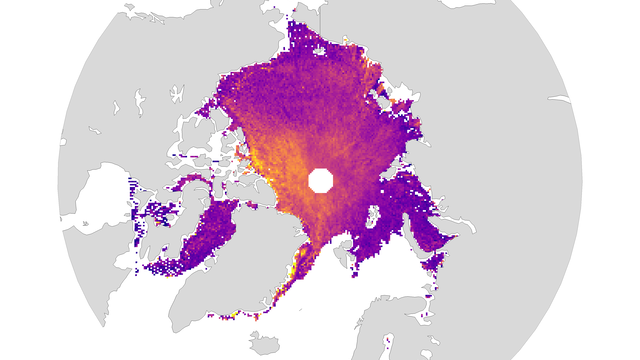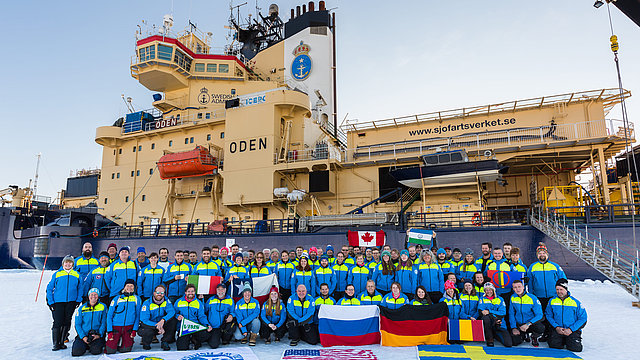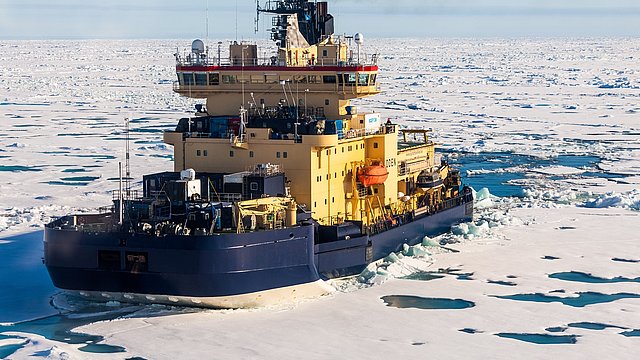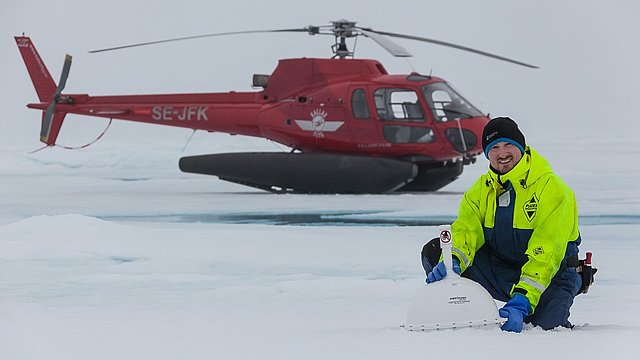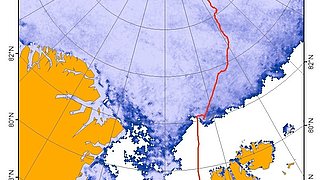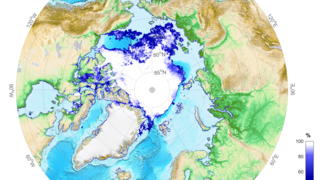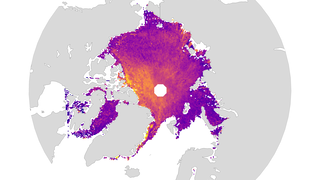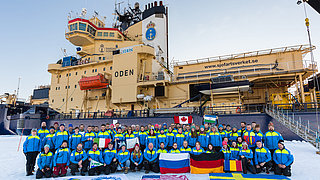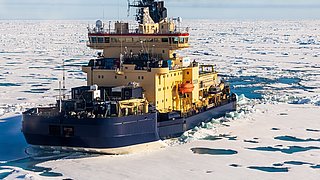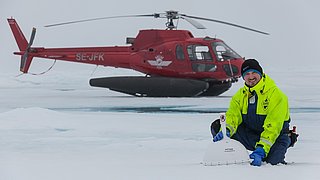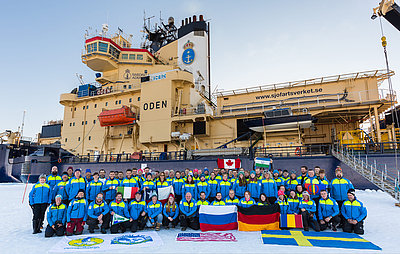It may come as a surprise, but due to this year’s ice conditions, the Swedish icebreaker Oden had serious difficulties penetrating to the North Pole. The months-long northward ice drift compacted the ice in the Central Arctic more intensely than it has in years. The current sea-ice extent, just like in the past several years, is once again very low, and the Oden first hit the edge of the ice at 82 °N. Yet the pack ice itself is for the most part very dense; there are virtually no patches of open water between the massive floes. This meant hard work for Sweden’s largest icebreaker. At many points along the way, it looked as though the expedition team would have to give up on their original destination and try their luck farther south. It wasn’t until two hundred kilometres from the Pole that the situation improved somewhat, and the Oden increasingly encountered younger, seasonal ice (see Figure 1). In addition, the tracks left behind by a Russian nuclear-powered icebreaker made the last few days leading to the Pole significantly easier going. Four miles from the Pole, the Oden reached the end of the line: a several-kilometre-long floe that straddled the geographic North Pole (Figure 2). During the festive celebrations on the bridge, the captain noted that these had been the most difficult ice conditions he’d seen in the past fifteen years – a small comeback for the Arctic’s melting sea ice (Figures 3 and 4).
On board the icebreaker, a team from the AWI’s Sea-ice Physics section, together with international colleagues, monitor the sea-ice situation closely. The goal of the joint Swedish and American-led expedition is to use the ship as a ‘drift station’, allowing it to drift in the vicinity of the North Pole for an entire month. Here, the main focus is on investigating the polar atmosphere. So as to ensure the delicate equipment for measuring various characteristics of clouds and aerosols isn’t disturbed, the Oden will drop anchor at a floe and shut down its engines. For at least the next month, the ice floe will be the researchers’ new home. “We’ll be setting up weather masts, deploying numerous weather balloons, and exploring the patches of open water in detail – all in order to decipher the clouds of mist so frequently found in the Arctic,” explains AWI sea-ice physicist Dr Christian Katlein with regard to the agenda for the weeks to come.
In the context of this collaboration, the AWI team headed by Dr Mario Hoppmann will especially investigate the characteristics of the sea ice and upper layers of the ocean. “One of the team’s main goals is to set up automatic monitoring stations, which will transmit back not only the atmospheric temperature and atmospheric pressure, but also information on the snow and sea-ice thickness by satellite. We’ll also be deploying prototypes of new buoys in the ice, designed to measure the energy budget of the ice cover and the development of the ecosystem,” adds Mario Hoppmann. On the way to the North Pole, the team distributed numerous buoys for the International Arctic Buoy Programme (IABP) and the Year of Polar Prediction (YOPP). Since there is no oceanographic research team on board the packed-to-the-brim ship, simple XCTD (eXpendable Conductivity Temperature Depth) probes will be used to measure the temperature and salinity in the upper thousand metres of the ocean, continuing longstanding polar oceanographic time series (Figure 5).
Once the drift station has been set up, the team will commence exploring the ice with the help of a remotely operated underwater vehicle (ROV). Above all, they will be observing seasonal changes in the light that penetrates the ice during the late-summer refreezing process, which is now beginning. For this purpose, a sample area will be assessed with light sensors at regular intervals, and the geometry of the ice will be measured down to the nearest centimetre using various sonar and laser-based systems. In addition, the currents, turbulence and biomass distribution in the upper water layers will be painstakingly analysed in order to gain new insights into the production of air bubbles and aerosols. “We’re very curious to see how the dense ice in the region has affected the ice thickness and the algae livening in the ice,” reports Christian Katlein from on board the icebreaker.
Kontakt
- Dr Christian Katlein (AWI)
- Dr Mario Hoppmann (AWI)
Questions?
Contact us via E-Mail or our contact form.
Graphics
